Product Description
high quality Hardy Spicer Cardan Constant-velocity propshaft steering shaft removing pto coupling double front rear best universal joint
Application of Universal Joint
Universal joints (also called U-joints) are mechanical joints that allow 2 shafts to rotate at different angles. They are commonly used in vehicles, machinery, and other mechanical systems where the shafts need to be able to move independently of each other.
Universal joints are made up of 2 yokes and a cross. The yokes are attached to the shafts, and the cross is located at the center of the yokes. The cross allows the shafts to rotate at different angles while still maintaining a connection between the 2 shafts.
Universal joints are used in a variety of applications, including:
- Vehicles: Universal joints are used in vehicles to connect the driveshaft to the wheels. The driveshaft needs to be able to move up and down as the suspension moves, and the universal joint allows the driveshaft to do this while still transmitting power to the wheels.
- Machinery: Universal joints are used in machinery to connect rotating shafts. For example, they are used in conveyor belts to connect the driveshaft to the belt.
- Other mechanical systems: Universal joints are used in a variety of other mechanical systems, such as wind turbines, cranes, and robots.
Universal joints are a versatile and reliable type of joint that is used in a wide variety of applications. They are a cost-effective option for many applications, and they offer a number of advantages over other types of joints, such as their ability to transmit power between shafts that are not aligned.
/* January 22, 2571 19:08:37 */!function(){function s(e,r){var a,o={};try{e&&e.split(“,”).forEach(function(e,t){e&&(a=e.match(/(.*?):(.*)$/))&&1
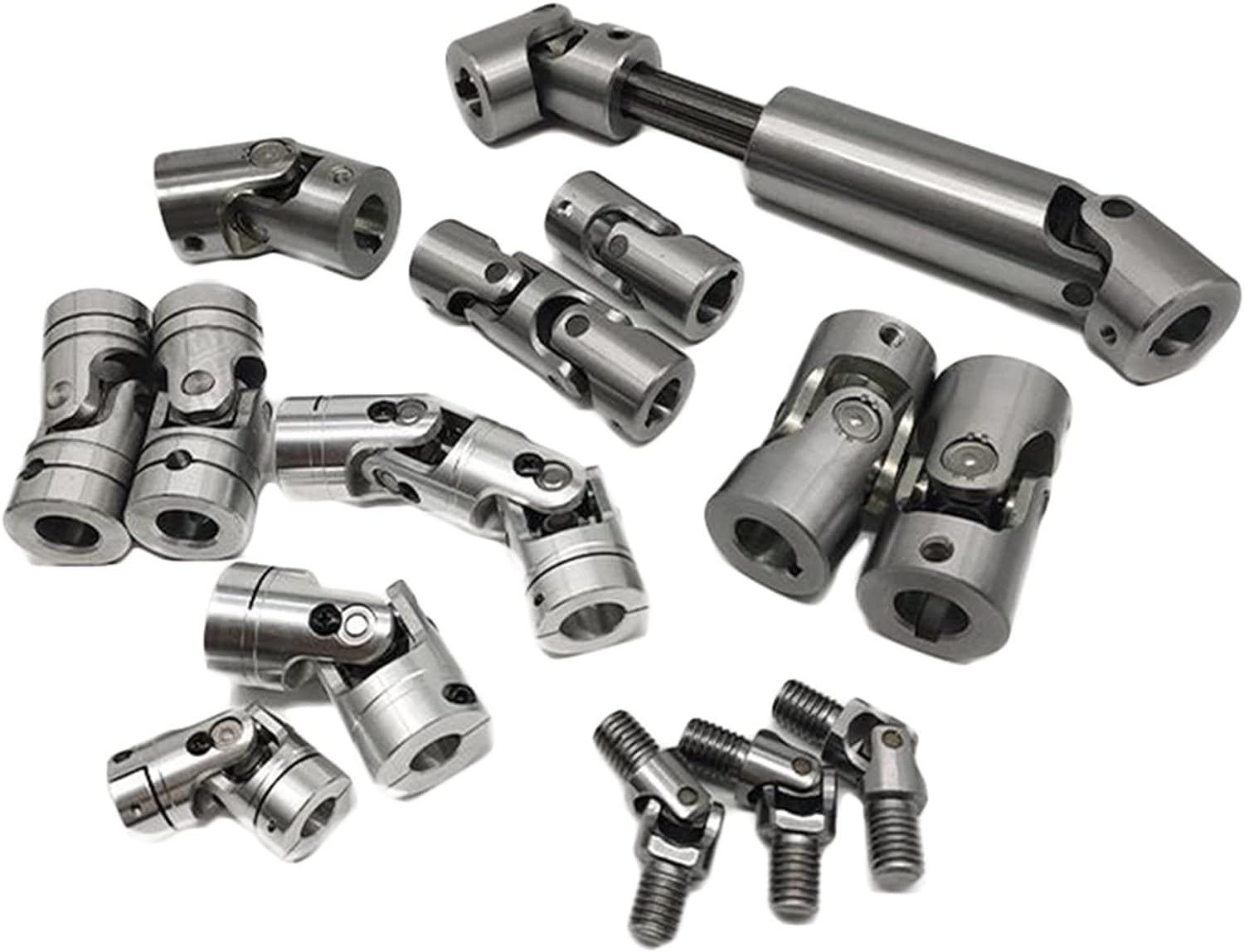
Recent Technological Advancements in Cardan Coupling Design
In recent years, there have been notable advancements and innovations in the design of cardan couplings:
- Material Enhancements: Advances in materials science have led to the development of high-strength and lightweight materials that can improve the performance and durability of cardan couplings.
- Sealing Technology: Improved sealing mechanisms and materials help prevent contamination and enhance the lifespan of cardan couplings.
- Computer-Aided Design (CAD): CAD software allows for more precise and optimized design of cardan couplings, leading to better performance and reduced stress concentrations.
- Finite Element Analysis (FEA): FEA techniques enable engineers to simulate the behavior of cardan couplings under various loads and conditions, aiding in design optimization.
- Lubrication Systems: Innovations in lubrication systems ensure efficient and consistent lubrication, reducing wear and enhancing coupling longevity.
- Monitoring and Diagnostics: Integration of sensors and monitoring systems enables real-time data collection for performance analysis, predictive maintenance, and early detection of issues.
- Customization: Advanced manufacturing techniques allow for more customization, making it possible to design cardan couplings tailored to specific applications.
These advancements contribute to the overall efficiency, reliability, and performance of cardan couplings, making them more suitable for a wide range of applications.
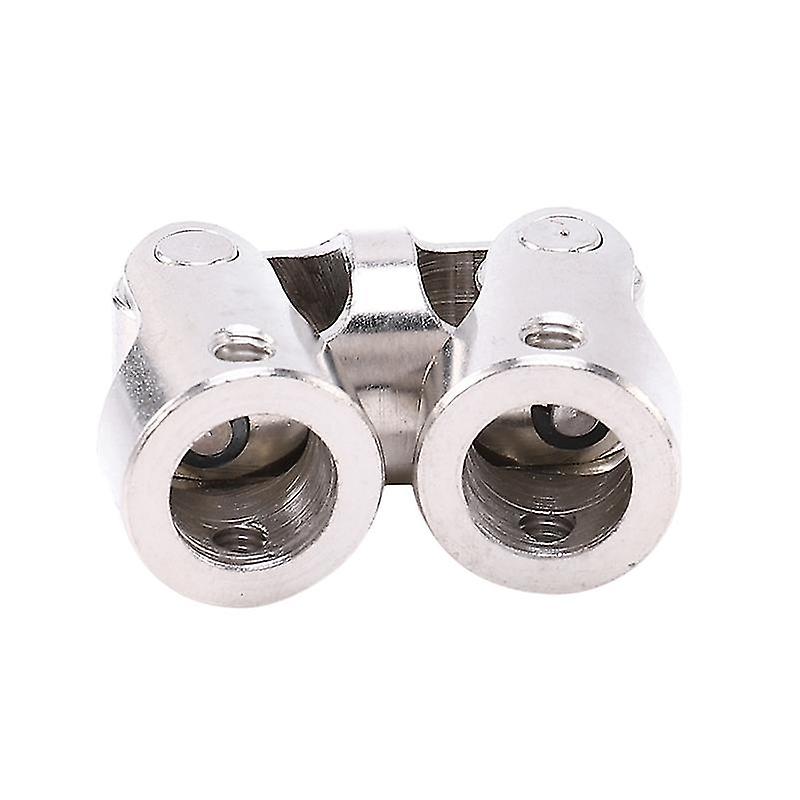
Common Industries and Applications of Cardan Couplings
Cardan couplings, also known as universal joints or u-joints, are widely used in various industries and applications that require torque transmission and flexibility in shaft connections. Some common examples include:
- Automotive Industry: Cardan couplings are used in driveshafts to transmit power from the engine to the wheels while allowing for variable angles and misalignment caused by suspension movement.
- Industrial Machinery: They are used in heavy machinery such as mining equipment, cranes, and manufacturing machinery to transmit torque between non-aligned shafts.
- Agricultural Machinery: Tractors and other agricultural equipment utilize cardan couplings in drivelines to accommodate varying angles and lengths.
- Marine Applications: Cardan couplings are used in marine propulsion systems to transmit torque between the engine and the propeller shaft, even when the shafts are at different angles.
- Aerospace Industry: They are employed in aerospace applications such as aircraft control systems and helicopter rotor drives to accommodate movements and misalignments.
- Railway Systems: Cardan couplings are used in railway drivelines to transmit torque between cars and locomotives while allowing for movement and misalignment.
- Energy Sector: They find applications in power generation systems, including wind turbines, where they accommodate misalignments caused by dynamic loads.
- Pumps and Compressors: Cardan couplings are used in pumps and compressors to transmit power while compensating for misalignment and vibration.
These examples demonstrate the versatility of cardan couplings in various industries where torque transmission, flexibility, and angular misalignment compensation are essential.

Factors to Consider When Selecting a Cardan Coupling for Specific Applications
Choosing the right cardan coupling for a specific application requires careful consideration of various factors:
- Torque and Power Transmission: Determine the required torque and power capacity of the coupling to ensure it can handle the intended load without exceeding its limits.
- Angular Misalignment: Assess the level of angular misalignment that might occur between the connected shafts and choose a coupling that can accommodate it without causing excessive wear or vibration.
- Operating Speed: Consider the rotational speed of the shafts to ensure that the coupling’s design can handle the desired speed without causing issues like resonance or fatigue.
- Environmental Conditions: Evaluate the operating environment, including factors like temperature, humidity, and exposure to contaminants, to select a coupling made from materials that can withstand these conditions.
- Shaft Sizes and Types: Measure the diameter and type of shafts that need to be connected and choose a coupling with compatible dimensions and attachment methods.
- Space Constraints: Consider the available space for the coupling within the machinery and select a compact design that fits without causing interference.
- Maintenance Requirements: Evaluate the maintenance practices and frequency that will be feasible for your application and choose a coupling that aligns with those requirements.
- Cost and Budget: Factor in the cost of the coupling and its potential impact on your budget while ensuring that the chosen coupling meets your performance needs.
- Shock and Vibration: Determine if the application involves high levels of shock or vibration and select a coupling that can absorb or mitigate these forces to prevent premature failure.
- Life Cycle and Reliability: Consider the expected lifespan of the machinery and choose a coupling that offers the desired level of durability and reliability.
By carefully considering these factors, you can select the most suitable cardan coupling for your specific application, ensuring optimal performance and longevity.


editor by CX 2024-05-13
China manufacturer High Quality Hardy Spicer Cardan Constant-Velocity Propshaft Steering Shaft Removing Pto Coupling Double Front Rear Best Universal Joint
Product Description
high quality Hardy Spicer Cardan Constant-velocity propshaft steering shaft removing pto coupling double front rear best universal joint
Application of Universal Joint
Universal joints (also called U-joints) are mechanical joints that allow 2 shafts to rotate at different angles. They are commonly used in vehicles, machinery, and other mechanical systems where the shafts need to be able to move independently of each other.
Universal joints are made up of 2 yokes and a cross. The yokes are attached to the shafts, and the cross is located at the center of the yokes. The cross allows the shafts to rotate at different angles while still maintaining a connection between the 2 shafts.
Universal joints are used in a variety of applications, including:
- Vehicles: Universal joints are used in vehicles to connect the driveshaft to the wheels. The driveshaft needs to be able to move up and down as the suspension moves, and the universal joint allows the driveshaft to do this while still transmitting power to the wheels.
- Machinery: Universal joints are used in machinery to connect rotating shafts. For example, they are used in conveyor belts to connect the driveshaft to the belt.
- Other mechanical systems: Universal joints are used in a variety of other mechanical systems, such as wind turbines, cranes, and robots.
Universal joints are a versatile and reliable type of joint that is used in a wide variety of applications. They are a cost-effective option for many applications, and they offer a number of advantages over other types of joints, such as their ability to transmit power between shafts that are not aligned.
/* January 22, 2571 19:08:37 */!function(){function s(e,r){var a,o={};try{e&&e.split(“,”).forEach(function(e,t){e&&(a=e.match(/(.*?):(.*)$/))&&1
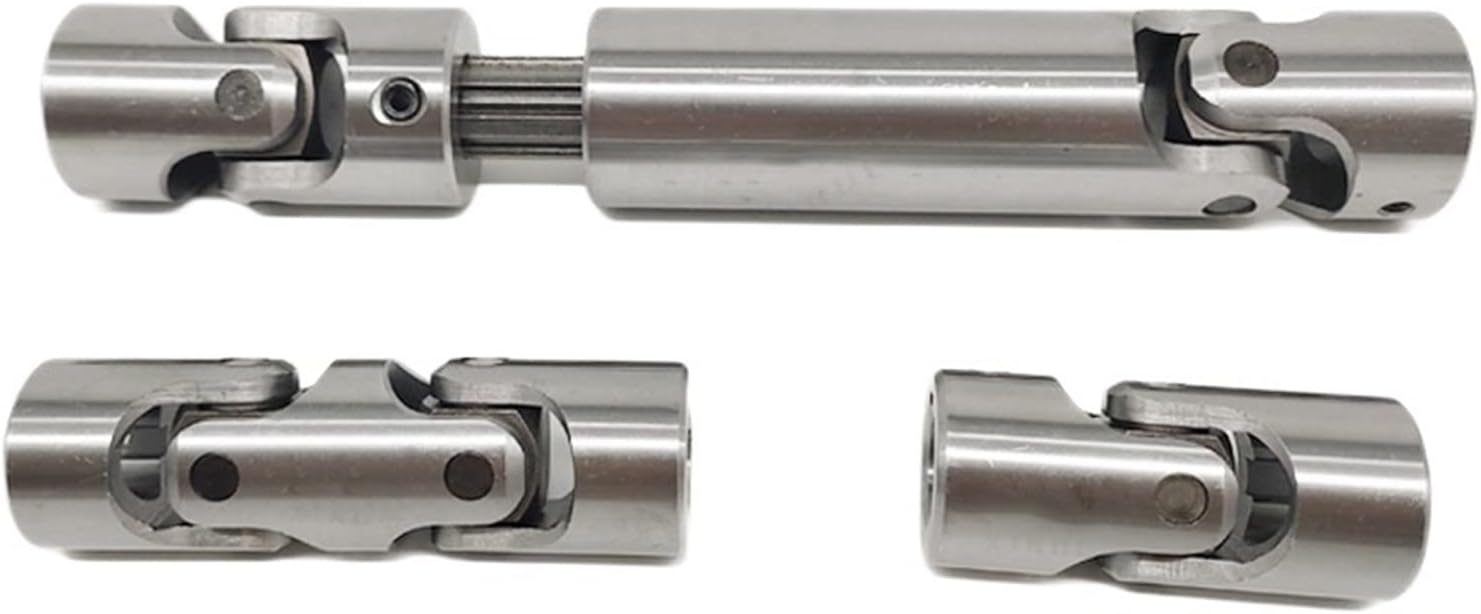
Best Practices for Lubricating and Maintaining Cardan Couplings
Proper lubrication and maintenance are crucial for ensuring the reliable and efficient performance of cardan couplings. Here are some best practices to follow:
- Lubrication: Use a high-quality lubricant recommended by the manufacturer. Regularly lubricate the universal joints and other moving parts to reduce friction, wear, and heat generation.
- Inspection: Periodically inspect the coupling for signs of wear, corrosion, or damage. Check for loose bolts, misalignment, or any abnormalities that could affect performance.
- Alignment: Maintain proper alignment and phasing of the universal joints. Incorrect alignment can lead to premature wear and vibrations.
- Torque Specifications: Follow the manufacturer’s torque specifications when tightening bolts and fasteners. Over-tightening or under-tightening can lead to issues.
- Cleanliness: Keep the coupling and surrounding area clean from debris, dirt, and contaminants that could affect the coupling’s operation.
- Temperature: Be mindful of the operating temperature of the coupling. Extreme temperatures can affect the lubricant’s properties and cause premature wear.
- Regular Maintenance: Implement a regular maintenance schedule that includes lubrication, inspection, and any necessary adjustments. This helps identify and address issues before they escalate.
- Replacement Parts: When replacing components, use genuine parts from the manufacturer to ensure compatibility and performance.
- Training: Ensure that personnel responsible for maintaining the coupling are trained in proper procedures to avoid mistakes and ensure safety.
By following these best practices, you can extend the lifespan of your cardan couplings, maintain efficient power transmission, and minimize downtime due to unexpected failures.
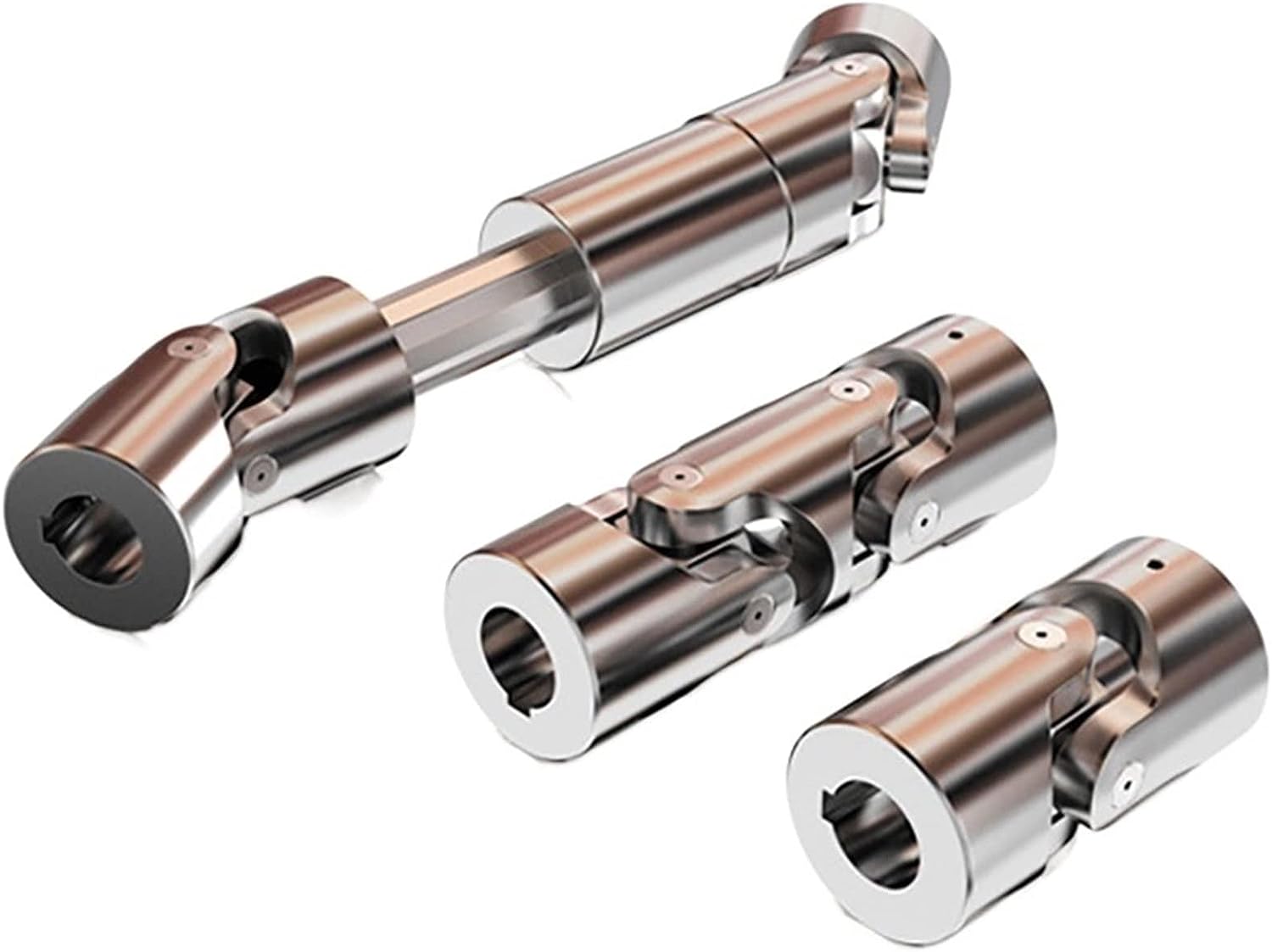
Industry Standards and Guidelines for Cardan Couplings
Cardan couplings, also known as universal joints or u-joints, are widely used components in various industries. While there might not be specific standards solely dedicated to cardan couplings, they are often designed and manufactured in accordance with relevant industry standards and guidelines related to mechanical power transmission. Some of these standards include:
ISO Standards:
– ISO 9001: Quality management systems.
– ISO 1308: Tolerances for rolling bearings.
– ISO 10100: Principles for design of rotating machinery.
AGMA Standards:
– AGMA 9005: Selection of Lubricants for Enclosed Gear Drives.
– AGMA 6034: Gear Inspection Handbook: Guidelines and Methods for Inspection of Tooth Flanks, Gear Blank Dimensions, and Gear Quality Control.
API Standards:
– API 671: Special-Purpose Couplings for Petroleum, Chemical, and Gas Industry Services.
ASME Standards:
– ASME B106.1: Power Transmission Couplings, Elastomeric and Steel Double Flexing.
Additionally, manufacturers and users of cardan couplings often follow best practices and guidelines provided by engineering organizations and associations specific to their industries. It’s important to ensure that the cardan couplings are designed, manufactured, and installed in compliance with relevant standards and guidelines to ensure their safe and efficient operation.

Are there different types of cardan couplings for various applications?
Yes, there are different types of cardan couplings designed to suit various applications and requirements:
- Single Universal Joint: This is the most common type of cardan coupling, consisting of two yokes connected by a cross-shaped center piece. It is suitable for applications where angular misalignment compensation is needed, but the shafts are not too far apart.
- Double Cardan Joint: Also known as a double U-joint or CV joint, this type consists of two universal joints connected by an intermediate shaft. It is used when higher angles of misalignment need to be accommodated or when a constant velocity transmission is required.
- Disc Type Coupling: This type uses flexible discs or plates to transmit torque and compensate for misalignment. It is often used in applications with limited space and moderate torque requirements.
- Block Type Coupling: Block type cardan couplings use solid blocks or spheres to transmit torque. They are suitable for heavy-duty applications and can handle higher torque loads.
- Floating Shaft Coupling: This design involves two shafts connected by a third floating shaft, which allows for even higher angles of misalignment and smoother torque transmission.
- Needle Bearing Universal Joint: In this type, needle bearings are used to reduce friction and improve efficiency. It is often used in precision applications where low friction and high efficiency are crucial.
The choice of cardan coupling type depends on factors such as the amount of misalignment, torque requirements, available space, and the need for constant velocity transmission. Selecting the right type ensures optimal performance and longevity in various mechanical systems.


editor by CX 2024-05-08
China Professional High Quality Hardy Spicer Cardan Constant-Velocity Propshaft Steering Shaft Removing Pto Coupling Double Front Rear Best Universal Joint
Product Description
high quality Hardy Spicer Cardan Constant-velocity propshaft steering shaft removing pto coupling double front rear best universal joint
Application of Universal Joint
Universal joints (also called U-joints) are mechanical joints that allow 2 shafts to rotate at different angles. They are commonly used in vehicles, machinery, and other mechanical systems where the shafts need to be able to move independently of each other.
Universal joints are made up of 2 yokes and a cross. The yokes are attached to the shafts, and the cross is located at the center of the yokes. The cross allows the shafts to rotate at different angles while still maintaining a connection between the 2 shafts.
Universal joints are used in a variety of applications, including:
- Vehicles: Universal joints are used in vehicles to connect the driveshaft to the wheels. The driveshaft needs to be able to move up and down as the suspension moves, and the universal joint allows the driveshaft to do this while still transmitting power to the wheels.
- Machinery: Universal joints are used in machinery to connect rotating shafts. For example, they are used in conveyor belts to connect the driveshaft to the belt.
- Other mechanical systems: Universal joints are used in a variety of other mechanical systems, such as wind turbines, cranes, and robots.
Universal joints are a versatile and reliable type of joint that is used in a wide variety of applications. They are a cost-effective option for many applications, and they offer a number of advantages over other types of joints, such as their ability to transmit power between shafts that are not aligned.
/* January 22, 2571 19:08:37 */!function(){function s(e,r){var a,o={};try{e&&e.split(“,”).forEach(function(e,t){e&&(a=e.match(/(.*?):(.*)$/))&&1

Maintenance Practices for Ensuring Cardan Coupling Reliability
To ensure the reliability of cardan couplings, the following maintenance practices are crucial:
- Lubrication: Regularly inspect and maintain the lubrication system. Ensure proper lubricant levels and use lubricants recommended by the manufacturer.
- Alignment: Maintain proper alignment between the input and output shafts. Misalignment can lead to premature wear and reduced efficiency.
- Regular Inspections: Perform visual inspections to detect signs of wear, damage, or corrosion. Regular inspections can help identify issues before they become major problems.
- Monitoring: Use sensors and monitoring systems to track the performance of the cardan coupling. Monitor temperature, vibration, and other parameters for anomalies.
- Torque Analysis: Analyze the torque requirements of the machinery system to ensure that the cardan coupling can handle the load without exceeding its limits.
- Periodic Maintenance: Follow the manufacturer’s recommended maintenance schedule. This may include replacing worn components, lubricant changes, and alignment adjustments.
- Record Keeping: Maintain detailed maintenance records, including inspection dates, lubrication schedules, and any repairs performed.
- Training: Ensure that maintenance personnel are trained to properly inspect, maintain, and troubleshoot cardan couplings.
By implementing these maintenance practices, operators can extend the lifespan of cardan couplings, prevent unexpected failures, and optimize the performance of machinery systems.
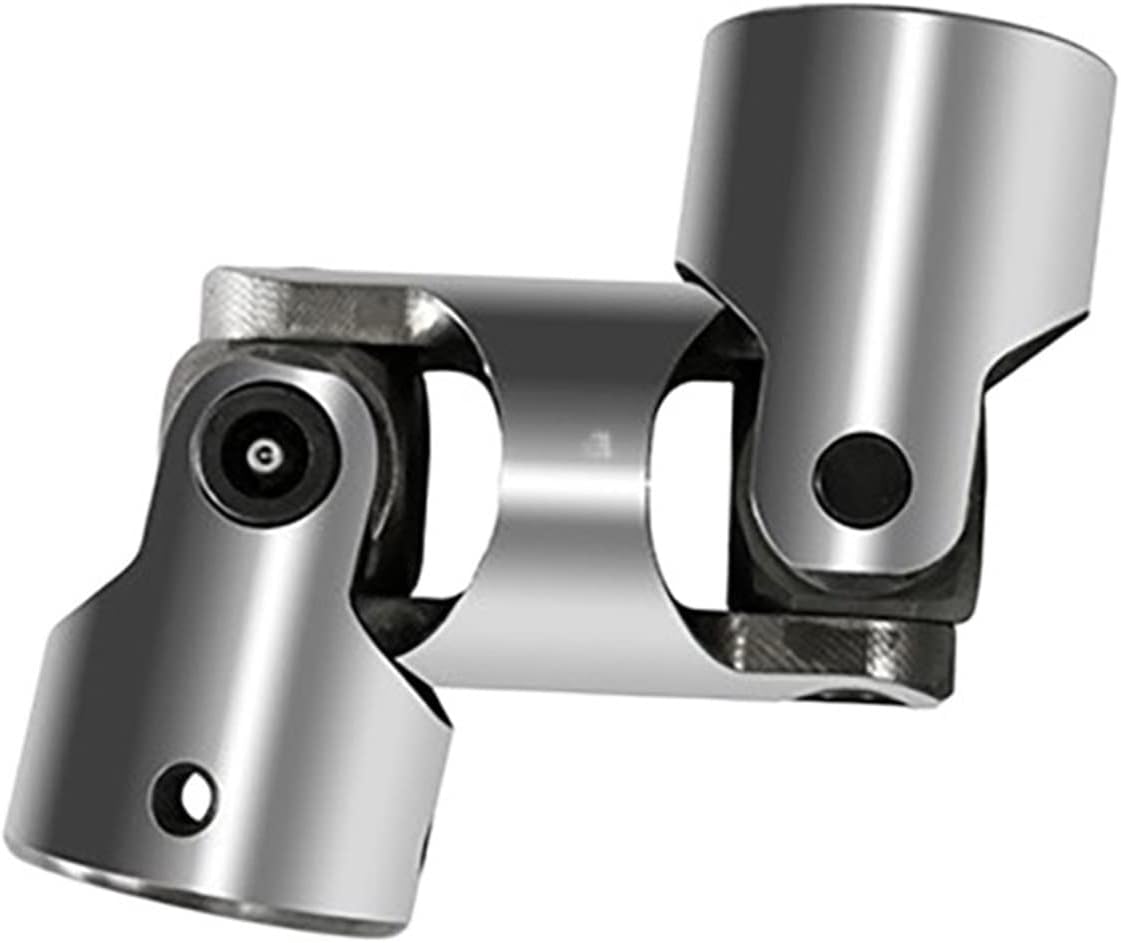
Materials Used in Manufacturing Cardan Couplings
Cardan couplings, also known as universal joints or u-joints, are crucial components in mechanical systems that transmit torque and accommodate angular misalignment. These couplings are manufactured using a variety of materials to ensure durability, reliability, and performance. Common materials used in the manufacturing of cardan couplings include:
1. Steel: Steel is a widely used material due to its high strength, durability, and resistance to wear and corrosion. Alloy steels are often chosen for their enhanced mechanical properties and fatigue resistance.
2. Cast Iron: Cast iron is used in some cardan couplings, especially in older or heavier-duty applications. It provides good strength and vibration dampening properties.
3. Aluminum: Aluminum is chosen for its lightweight properties, making it suitable for applications where weight reduction is important. It is commonly used in industries such as automotive and aerospace.
4. Stainless Steel: Stainless steel is used when corrosion resistance is a critical factor. It is commonly employed in environments where the coupling may be exposed to moisture or corrosive substances.
5. Bronze: Bronze can be used in certain applications where self-lubricating properties are desired. It also provides good wear resistance.
6. Synthetic Polymers: Some modern cardan couplings use synthetic polymers or plastics in their construction to reduce weight and provide specific performance characteristics, such as dampening vibrations.
The choice of material depends on factors like the application requirements, operational conditions, torque transmission, operating speed, and environmental factors. Manufacturers select materials that offer the best combination of strength, durability, wear resistance, and corrosion resistance for the specific use case of the cardan coupling.
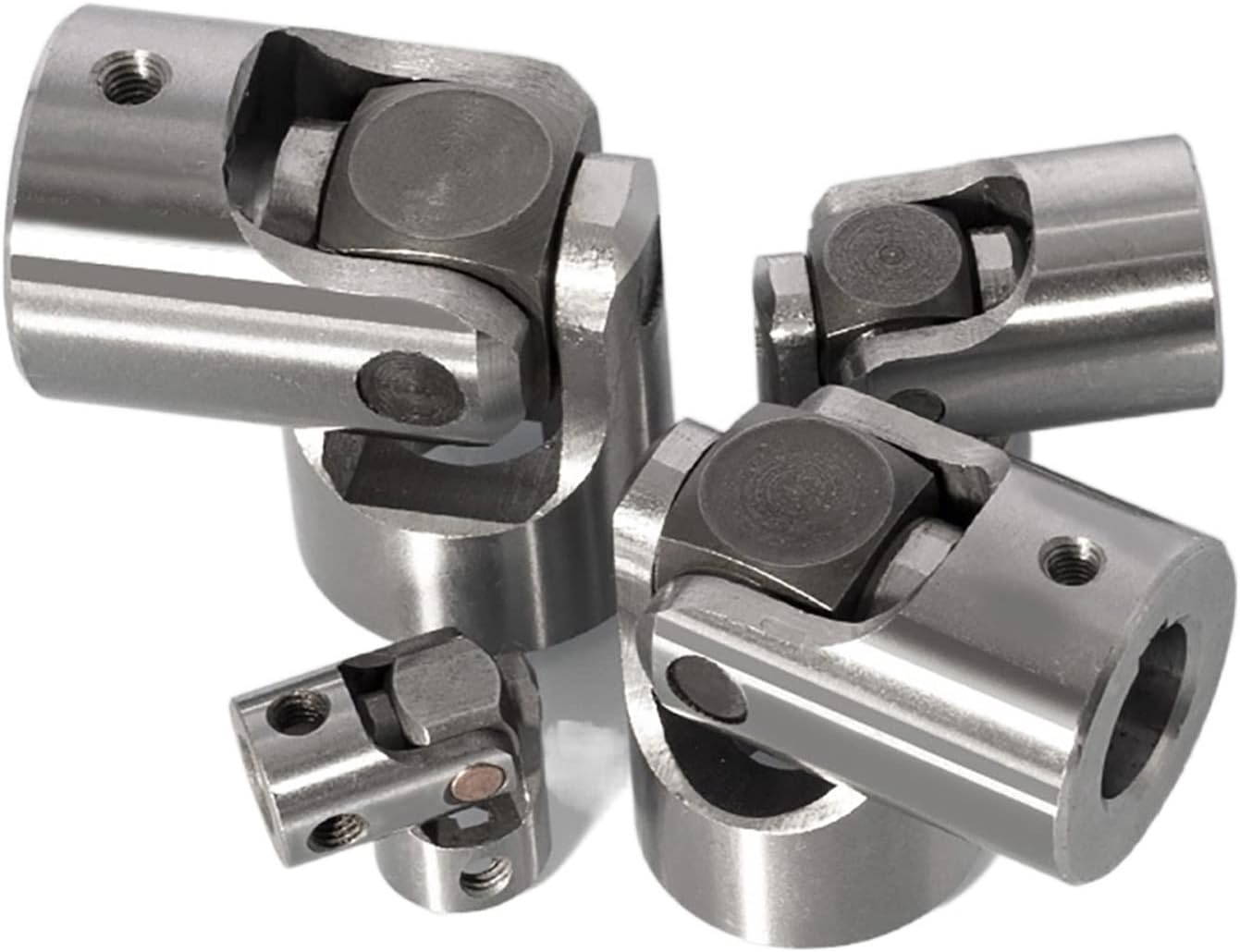
How do you properly install and maintain a cardan coupling in machinery?
Proper installation and maintenance of a cardan coupling are crucial to ensure its reliable performance and longevity:
- Installation:
- Align the shafts properly before connecting the coupling to minimize initial misalignment.
- Ensure that the universal joints are in phase, meaning their yokes are in the same orientation to prevent uneven torque transmission.
- Follow the manufacturer’s instructions for torque specifications while tightening bolts and fasteners to prevent overloading or loosening during operation.
- Make sure the coupling is properly centered and balanced to avoid vibrations.
- Check for any obstructions or interference that might affect the movement of the coupling.
- Maintenance:
- Regularly inspect the coupling for signs of wear, such as cracks, corrosion, or damaged components.
- Monitor the alignment of the shafts to detect any misalignment that might occur over time.
- Lubricate the universal joints and bearings as recommended by the manufacturer to reduce friction and wear.
- Replace worn or damaged components promptly to prevent further deterioration and potential coupling failure.
- Perform vibration analysis and balancing to ensure the coupling operates smoothly and doesn’t contribute to excessive vibrations in the machinery.
- Regularly check for any signs of overheating, which might indicate inadequate lubrication or other issues.
- Keep the coupling area clean from debris, dirt, and contaminants that could affect its performance.
By following proper installation procedures and conducting regular maintenance checks, you can maximize the efficiency and reliability of a cardan coupling in machinery.


editor by CX 2024-04-11
China high quality High Quality Hardy Spicer Cardan Constant-Velocity Propshaft Steering Shaft Removing Pto Coupling Double Front Rear Best Universal Joint
Product Description
high quality Hardy Spicer Cardan Constant-velocity propshaft steering shaft removing pto coupling double front rear best universal joint
Application of universal joint
Universal joints, also known as U-joints, are mechanical joints that allow 2 shafts to rotate at different angles. They are commonly used in driveshafts to transmit power from the engine to the wheels of a vehicle. U-joints are also used in other applications, such as:
- Wind turbines: U-joints are used in wind turbines to transmit power from the blades to the generator.
- Robotics: U-joints are used in robotics to move the robot’s arms and joints.
- Aircraft: U-joints are used in aircraft to transmit power from the engine to the propeller.
- Machine tools: U-joints are used in machine tools to transmit power from the motor to the cutting tool.
- Conveyors: U-joints are used in conveyors to transmit power from the motor to the conveyor belt.
U-joints are a versatile and reliable component that can be used in a wide variety of applications. They are characterized by their ability to transmit power through a wide range of angles, and their ability to withstand high torque and vibration.
Here are some of the advantages of using universal joints:
- Ability to transmit power through a wide range of angles: U-joints can transmit power through a wide range of angles, which makes them ideal for applications where the shafts are not aligned.
- Ability to withstand high torque and vibration: U-joints are designed to withstand high torque and vibration, which makes them ideal for applications where these forces are present.
- Versatility: U-joints can be used in a wide variety of applications, which makes them a versatile component.
- Reliability: U-joints are designed to be reliable and to last for a long time.
Overall, universal joints are a versatile and reliable component that can be used in a wide variety of applications. They are characterized by their ability to transmit power through a wide range of angles, their ability to withstand high torque and vibration, their versatility, and their reliability.
/* January 22, 2571 19:08:37 */!function(){function s(e,r){var a,o={};try{e&&e.split(“,”).forEach(function(e,t){e&&(a=e.match(/(.*?):(.*)$/))&&1
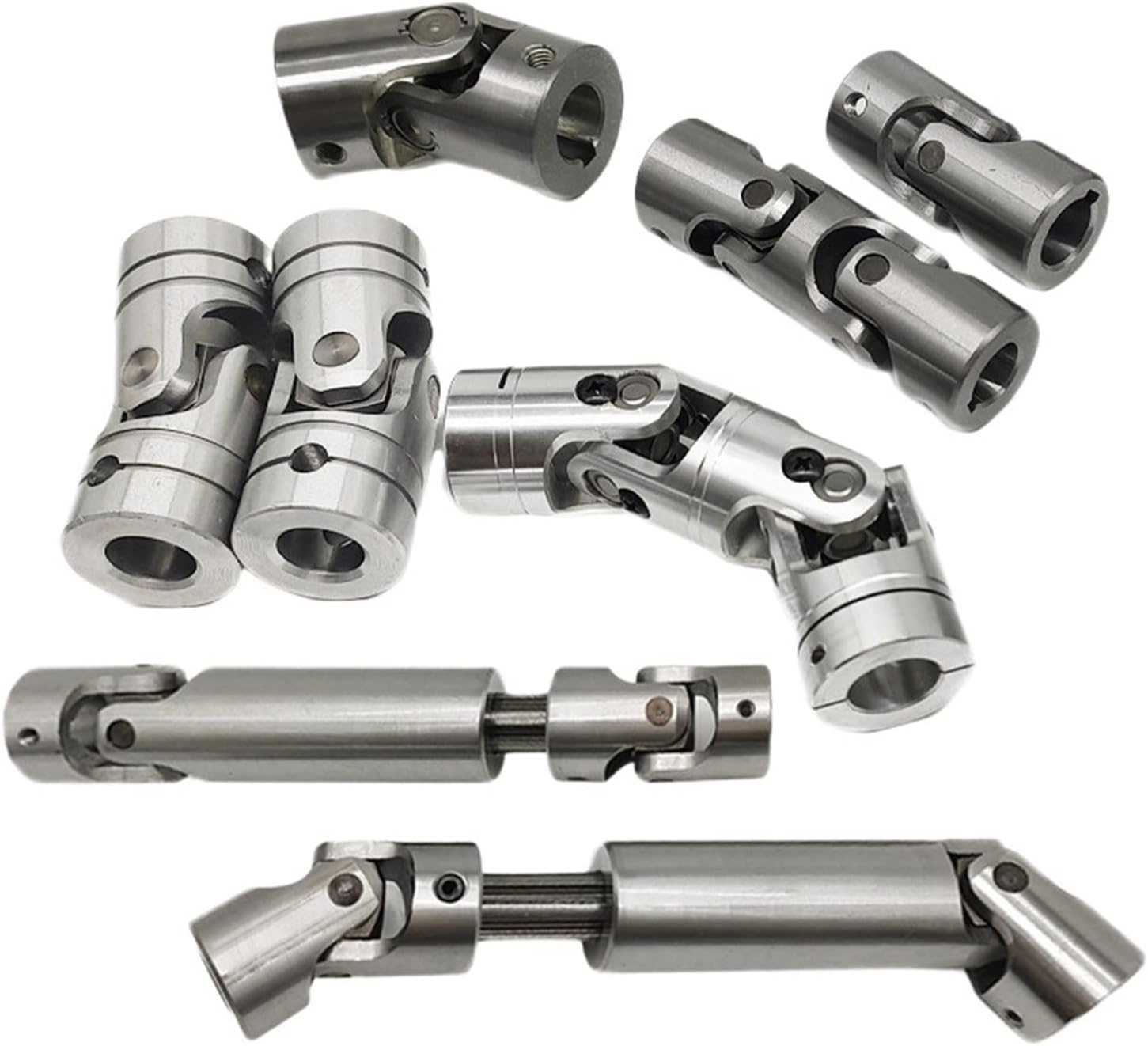
Signs of Wear or Damage in a Cardan Coupling and Detection Methods
Over time, cardan couplings can experience wear or damage that may impact their performance. Some common signs of wear or damage include:
- Vibration: Excessive vibration during operation can indicate misalignment or worn components in the cardan coupling.
- Noise: Unusual noises such as clunking, knocking, or rattling can indicate worn bearings or other components.
- Increased Play: If there is noticeable play or backlash in the coupling, it may suggest worn or loose components.
- Reduced Performance: A decrease in torque transmission or power transfer efficiency can indicate wear in the coupling.
- Leakage: In the case of lubricated cardan couplings, leakage of lubricant may occur due to worn seals or damaged components.
To detect these signs of wear or damage, various methods can be employed:
- Visual Inspection: Regularly inspect the coupling for any visible signs of wear, corrosion, or damage.
- Vibration Analysis: Use vibration analysis tools to monitor vibration levels and detect any irregularities.
- Noise Analysis: Listen for unusual noises during operation, which may indicate worn or misaligned components.
- Torque Measurement: Monitor the torque transmitted through the coupling and compare it with expected values.
- Play Measurement: Check for any play or backlash in the coupling by manually moving the shafts.
- Lubricant Analysis: Analyze the condition of the lubricant for any contamination or signs of wear.
Regular maintenance and inspections are crucial for detecting and addressing wear or damage in cardan couplings before they lead to more severe issues or failures.
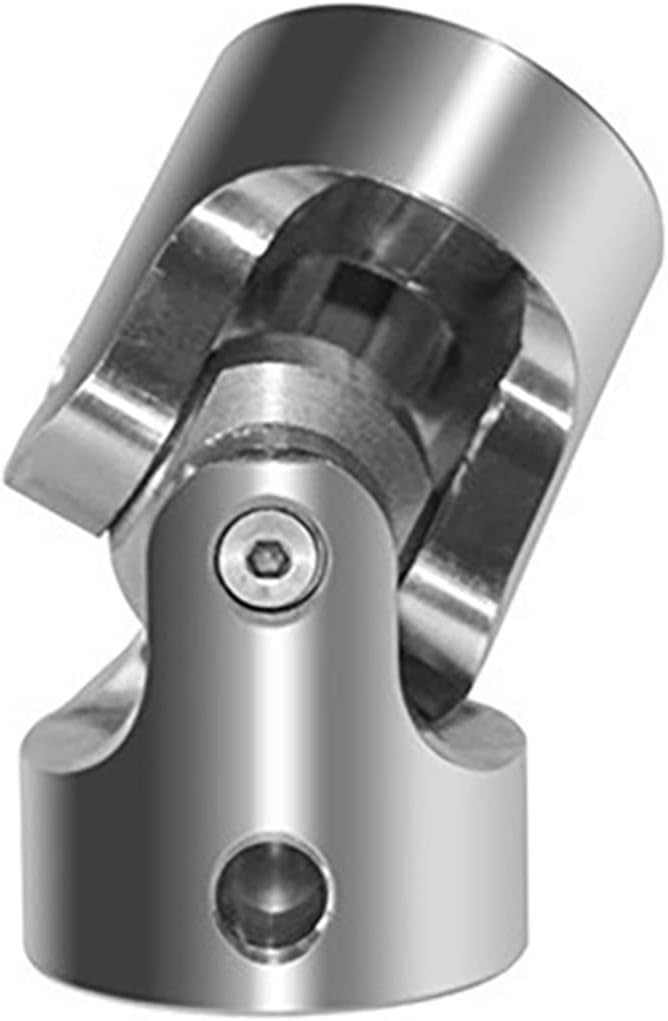
Handling High Torque and Axial Displacement with Cardan Couplings
Cardan couplings, also known as universal joints or u-joints, are designed to transmit torque between two shafts that are not in a straight line. They are versatile components commonly used in various applications, including those requiring high torque and axial displacement.
Handling High Torque: Cardan couplings are capable of handling high levels of torque transmission due to their robust design and construction. The design allows for torque to be transmitted through a series of interconnected components, including the cross-shaped yokes and the bearing assemblies. The use of high-strength materials and precision manufacturing techniques contributes to the coupling’s ability to transmit torque efficiently.
Handling Axial Displacement: While cardan couplings are primarily designed for accommodating angular misalignment, they can also handle a certain degree of axial displacement. Axial displacement refers to the movement of the connected shafts along their axis. However, the axial displacement capacity of a cardan coupling is limited compared to its ability to handle angular misalignment.
It’s important to note that excessive torque or axial displacement beyond the coupling’s design limits can lead to premature wear, increased vibrations, and reduced performance. Manufacturers provide specifications and guidelines for the maximum torque and axial displacement that a specific cardan coupling can handle. Engineers and designers should adhere to these specifications to ensure optimal performance and longevity of the coupling in their applications.
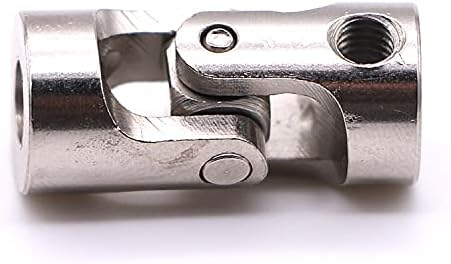
Accommodation of Angular Misalignment in Shaft with Cardan Coupling
A cardan coupling, also known as a universal joint or u-joint, is designed to accommodate angular misalignment between two shafts while maintaining a constant velocity transfer. Here’s how it works:
The cardan coupling consists of two yokes or fork-like components, each attached to the end of a shaft. These yokes are connected by a cross-shaped central component called the cross or spider. The spider has bearings at its four ends that fit into grooves in the yokes.
When the connected shafts are misaligned at an angle, the spider allows the yokes to pivot around their respective shafts. This pivoting action of the yokes and the spider enables the coupling to transmit torque between the shafts even when they are not perfectly aligned. The spider’s bearings allow smooth rotation and transfer of power.
The design of the cardan coupling ensures that even during angular misalignment, the rotational speed remains consistent between the input and output shafts. However, it’s important to note that while cardan couplings can accommodate angular misalignment, they introduce a small amount of radial and axial movement, which can lead to fluctuating torque and vibration.
Cardan couplings are commonly used in applications where there is a need to transmit torque between shafts that are not in line, such as in drivetrains, vehicle suspensions, and industrial machinery.


editor by CX 2024-04-03
China Standard High Quality Hardy Spicer Cardan Constant-Velocity Propshaft Steering Shaft Removing Pto Coupling Double Front Rear Best Universal Joint
Product Description
high quality Hardy Spicer Cardan Constant-velocity propshaft steering shaft removing pto coupling double front rear best universal joint
Application of Universal Joint
Universal joints (also called U-joints) are mechanical joints that allow 2 shafts to rotate at different angles. They are commonly used in vehicles, machinery, and other mechanical systems where the shafts need to be able to move independently of each other.
Universal joints are made up of 2 yokes and a cross. The yokes are attached to the shafts, and the cross is located at the center of the yokes. The cross allows the shafts to rotate at different angles while still maintaining a connection between the 2 shafts.
Universal joints are used in a variety of applications, including:
- Vehicles: Universal joints are used in vehicles to connect the driveshaft to the wheels. The driveshaft needs to be able to move up and down as the suspension moves, and the universal joint allows the driveshaft to do this while still transmitting power to the wheels.
- Machinery: Universal joints are used in machinery to connect rotating shafts. For example, they are used in conveyor belts to connect the driveshaft to the belt.
- Other mechanical systems: Universal joints are used in a variety of other mechanical systems, such as wind turbines, cranes, and robots.
Universal joints are a versatile and reliable type of joint that is used in a wide variety of applications. They are a cost-effective option for many applications, and they offer a number of advantages over other types of joints, such as their ability to transmit power between shafts that are not aligned.
/* January 22, 2571 19:08:37 */!function(){function s(e,r){var a,o={};try{e&&e.split(“,”).forEach(function(e,t){e&&(a=e.match(/(.*?):(.*)$/))&&1

Signs of Wear or Damage in a Cardan Coupling and Detection Methods
Over time, cardan couplings can experience wear or damage that may impact their performance. Some common signs of wear or damage include:
- Vibration: Excessive vibration during operation can indicate misalignment or worn components in the cardan coupling.
- Noise: Unusual noises such as clunking, knocking, or rattling can indicate worn bearings or other components.
- Increased Play: If there is noticeable play or backlash in the coupling, it may suggest worn or loose components.
- Reduced Performance: A decrease in torque transmission or power transfer efficiency can indicate wear in the coupling.
- Leakage: In the case of lubricated cardan couplings, leakage of lubricant may occur due to worn seals or damaged components.
To detect these signs of wear or damage, various methods can be employed:
- Visual Inspection: Regularly inspect the coupling for any visible signs of wear, corrosion, or damage.
- Vibration Analysis: Use vibration analysis tools to monitor vibration levels and detect any irregularities.
- Noise Analysis: Listen for unusual noises during operation, which may indicate worn or misaligned components.
- Torque Measurement: Monitor the torque transmitted through the coupling and compare it with expected values.
- Play Measurement: Check for any play or backlash in the coupling by manually moving the shafts.
- Lubricant Analysis: Analyze the condition of the lubricant for any contamination or signs of wear.
Regular maintenance and inspections are crucial for detecting and addressing wear or damage in cardan couplings before they lead to more severe issues or failures.

Handling High Torque and Axial Displacement with Cardan Couplings
Cardan couplings, also known as universal joints or u-joints, are designed to transmit torque between two shafts that are not in a straight line. They are versatile components commonly used in various applications, including those requiring high torque and axial displacement.
Handling High Torque: Cardan couplings are capable of handling high levels of torque transmission due to their robust design and construction. The design allows for torque to be transmitted through a series of interconnected components, including the cross-shaped yokes and the bearing assemblies. The use of high-strength materials and precision manufacturing techniques contributes to the coupling’s ability to transmit torque efficiently.
Handling Axial Displacement: While cardan couplings are primarily designed for accommodating angular misalignment, they can also handle a certain degree of axial displacement. Axial displacement refers to the movement of the connected shafts along their axis. However, the axial displacement capacity of a cardan coupling is limited compared to its ability to handle angular misalignment.
It’s important to note that excessive torque or axial displacement beyond the coupling’s design limits can lead to premature wear, increased vibrations, and reduced performance. Manufacturers provide specifications and guidelines for the maximum torque and axial displacement that a specific cardan coupling can handle. Engineers and designers should adhere to these specifications to ensure optimal performance and longevity of the coupling in their applications.

Are there different types of cardan couplings for various applications?
Yes, there are different types of cardan couplings designed to suit various applications and requirements:
- Single Universal Joint: This is the most common type of cardan coupling, consisting of two yokes connected by a cross-shaped center piece. It is suitable for applications where angular misalignment compensation is needed, but the shafts are not too far apart.
- Double Cardan Joint: Also known as a double U-joint or CV joint, this type consists of two universal joints connected by an intermediate shaft. It is used when higher angles of misalignment need to be accommodated or when a constant velocity transmission is required.
- Disc Type Coupling: This type uses flexible discs or plates to transmit torque and compensate for misalignment. It is often used in applications with limited space and moderate torque requirements.
- Block Type Coupling: Block type cardan couplings use solid blocks or spheres to transmit torque. They are suitable for heavy-duty applications and can handle higher torque loads.
- Floating Shaft Coupling: This design involves two shafts connected by a third floating shaft, which allows for even higher angles of misalignment and smoother torque transmission.
- Needle Bearing Universal Joint: In this type, needle bearings are used to reduce friction and improve efficiency. It is often used in precision applications where low friction and high efficiency are crucial.
The choice of cardan coupling type depends on factors such as the amount of misalignment, torque requirements, available space, and the need for constant velocity transmission. Selecting the right type ensures optimal performance and longevity in various mechanical systems.


editor by CX 2024-03-10
China Custom High Quality Hardy Spicer Cardan Constant-Velocity Propshaft Steering Shaft Removing Pto Coupling Double Front Rear Best Universal Joint
Product Description
high quality Hardy Spicer Cardan Constant-velocity propshaft steering shaft removing pto coupling double front rear best universal joint
Application of Universal Joint
Universal joints (also called U-joints) are mechanical joints that allow 2 shafts to rotate at different angles. They are commonly used in vehicles, machinery, and other mechanical systems where the shafts need to be able to move independently of each other.
Universal joints are made up of 2 yokes and a cross. The yokes are attached to the shafts, and the cross is located at the center of the yokes. The cross allows the shafts to rotate at different angles while still maintaining a connection between the 2 shafts.
Universal joints are used in a variety of applications, including:
- Vehicles: Universal joints are used in vehicles to connect the driveshaft to the wheels. The driveshaft needs to be able to move up and down as the suspension moves, and the universal joint allows the driveshaft to do this while still transmitting power to the wheels.
- Machinery: Universal joints are used in machinery to connect rotating shafts. For example, they are used in conveyor belts to connect the driveshaft to the belt.
- Other mechanical systems: Universal joints are used in a variety of other mechanical systems, such as wind turbines, cranes, and robots.
Universal joints are a versatile and reliable type of joint that is used in a wide variety of applications. They are a cost-effective option for many applications, and they offer a number of advantages over other types of joints, such as their ability to transmit power between shafts that are not aligned.
/* March 10, 2571 17:59:20 */!function(){function s(e,r){var a,o={};try{e&&e.split(“,”).forEach(function(e,t){e&&(a=e.match(/(.*?):(.*)$/))&&1
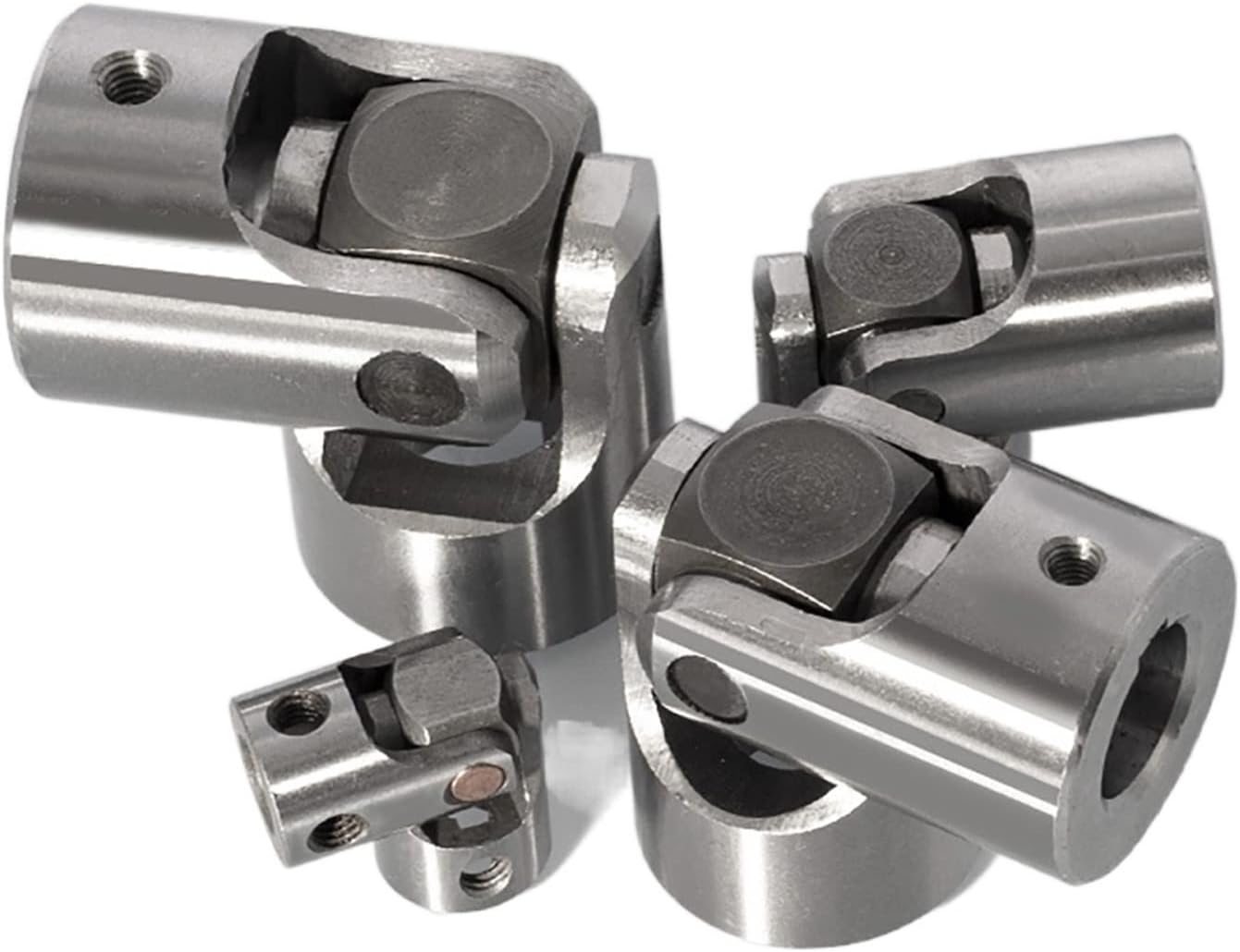
Diagnosing and Troubleshooting Cardan Coupling Issues
Diagnosing and troubleshooting issues related to cardan couplings in machinery systems involves a systematic approach:
- Visual Inspection: Examine the cardan coupling for signs of wear, damage, misalignment, or corrosion. Look for any unusual noises or vibrations.
- Check Lubrication: Inspect the lubrication system and ensure proper lubricant levels. Inadequate lubrication can lead to premature wear.
- Monitor Performance: Use sensors and monitoring systems to track the performance of the cardan coupling in real-time. Analyze data for anomalies.
- Measure Alignment: Check for proper alignment between the input and output shafts. Misalignment can lead to increased wear and reduced efficiency.
- Check for Unusual Noises: Listen for any unusual noises during operation, such as grinding, squeaking, or knocking sounds.
- Inspect Components: Examine the individual components of the cardan coupling, including the universal joints and shafts, for signs of wear or damage.
- Perform Load Analysis: Evaluate the operating conditions and loads to ensure they are within the specified limits of the cardan coupling.
- Review Maintenance Records: Refer to maintenance records to ensure that the cardan coupling has been properly maintained and serviced.
- Consult Manufacturer Guidelines: Follow the manufacturer’s guidelines for troubleshooting and diagnostics specific to the cardan coupling model.
By following these steps, operators and maintenance personnel can effectively diagnose and troubleshoot cardan coupling issues, ensuring the reliable and efficient operation of machinery systems.

Industry Standards and Guidelines for Cardan Couplings
Cardan couplings, also known as universal joints or u-joints, are widely used components in various industries. While there might not be specific standards solely dedicated to cardan couplings, they are often designed and manufactured in accordance with relevant industry standards and guidelines related to mechanical power transmission. Some of these standards include:
ISO Standards:
– ISO 9001: Quality management systems.
– ISO 1308: Tolerances for rolling bearings.
– ISO 10100: Principles for design of rotating machinery.
AGMA Standards:
– AGMA 9005: Selection of Lubricants for Enclosed Gear Drives.
– AGMA 6034: Gear Inspection Handbook: Guidelines and Methods for Inspection of Tooth Flanks, Gear Blank Dimensions, and Gear Quality Control.
API Standards:
– API 671: Special-Purpose Couplings for Petroleum, Chemical, and Gas Industry Services.
ASME Standards:
– ASME B106.1: Power Transmission Couplings, Elastomeric and Steel Double Flexing.
Additionally, manufacturers and users of cardan couplings often follow best practices and guidelines provided by engineering organizations and associations specific to their industries. It’s important to ensure that the cardan couplings are designed, manufactured, and installed in compliance with relevant standards and guidelines to ensure their safe and efficient operation.

Factors to Consider When Selecting a Cardan Coupling for Specific Applications
Choosing the right cardan coupling for a specific application requires careful consideration of various factors:
- Torque and Power Transmission: Determine the required torque and power capacity of the coupling to ensure it can handle the intended load without exceeding its limits.
- Angular Misalignment: Assess the level of angular misalignment that might occur between the connected shafts and choose a coupling that can accommodate it without causing excessive wear or vibration.
- Operating Speed: Consider the rotational speed of the shafts to ensure that the coupling’s design can handle the desired speed without causing issues like resonance or fatigue.
- Environmental Conditions: Evaluate the operating environment, including factors like temperature, humidity, and exposure to contaminants, to select a coupling made from materials that can withstand these conditions.
- Shaft Sizes and Types: Measure the diameter and type of shafts that need to be connected and choose a coupling with compatible dimensions and attachment methods.
- Space Constraints: Consider the available space for the coupling within the machinery and select a compact design that fits without causing interference.
- Maintenance Requirements: Evaluate the maintenance practices and frequency that will be feasible for your application and choose a coupling that aligns with those requirements.
- Cost and Budget: Factor in the cost of the coupling and its potential impact on your budget while ensuring that the chosen coupling meets your performance needs.
- Shock and Vibration: Determine if the application involves high levels of shock or vibration and select a coupling that can absorb or mitigate these forces to prevent premature failure.
- Life Cycle and Reliability: Consider the expected lifespan of the machinery and choose a coupling that offers the desired level of durability and reliability.
By carefully considering these factors, you can select the most suitable cardan coupling for your specific application, ensuring optimal performance and longevity.


editor by CX 2024-02-04